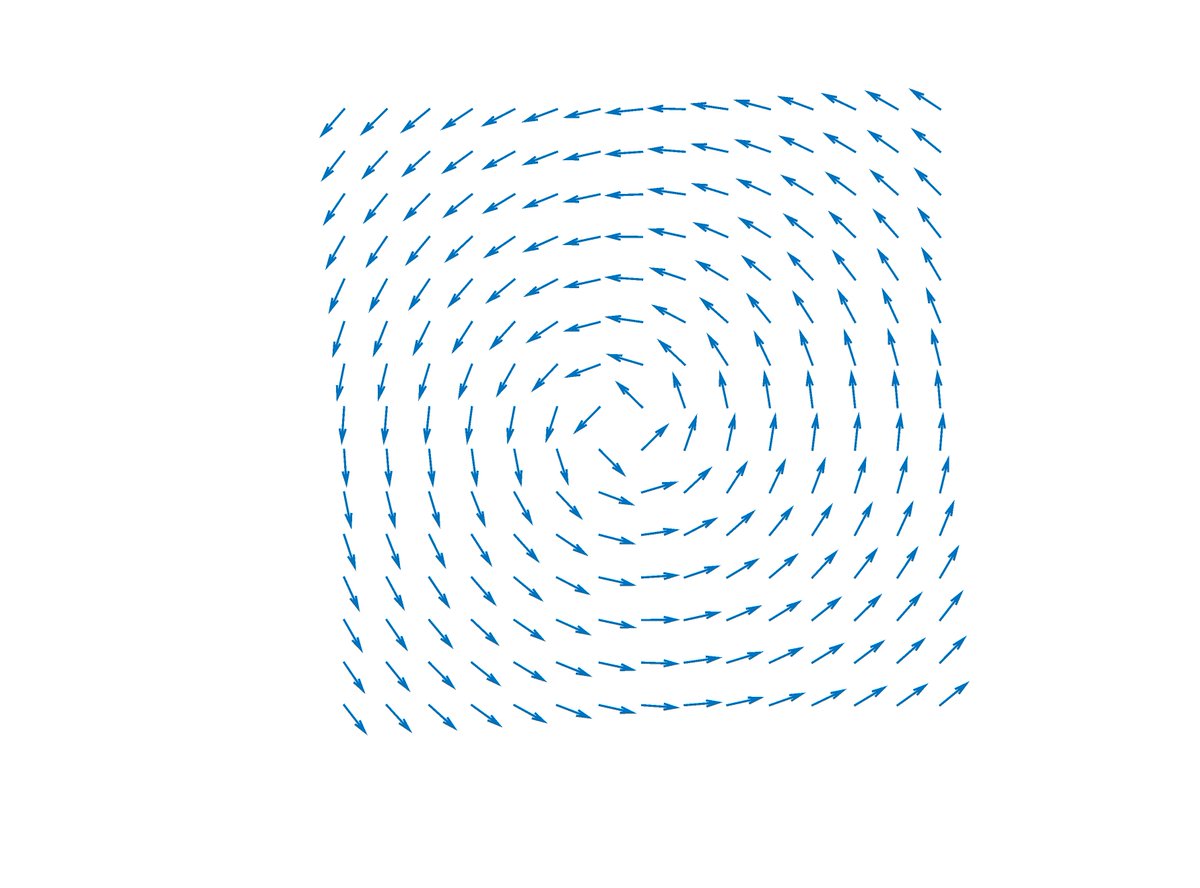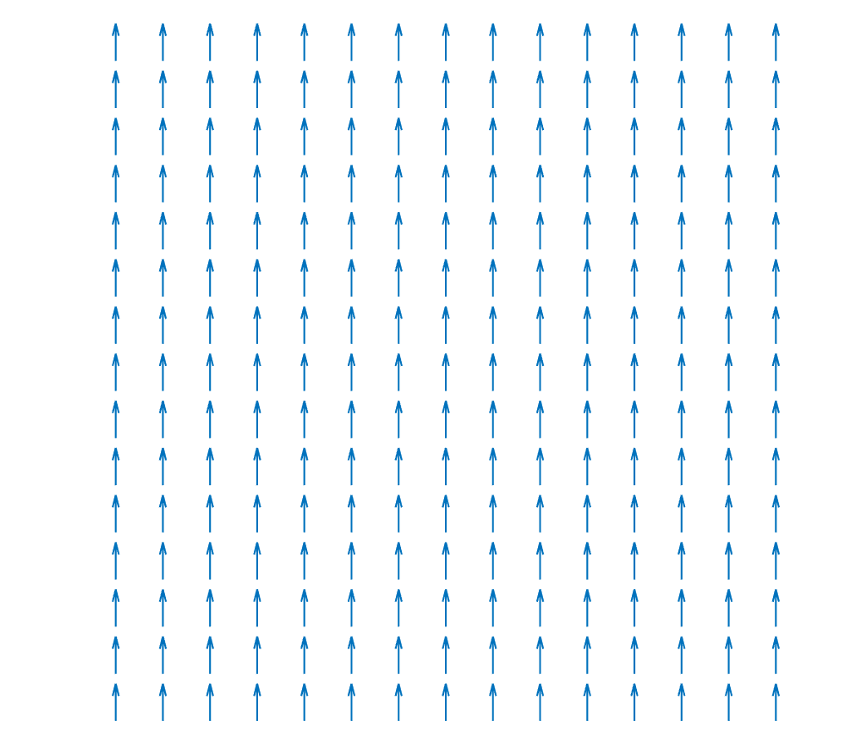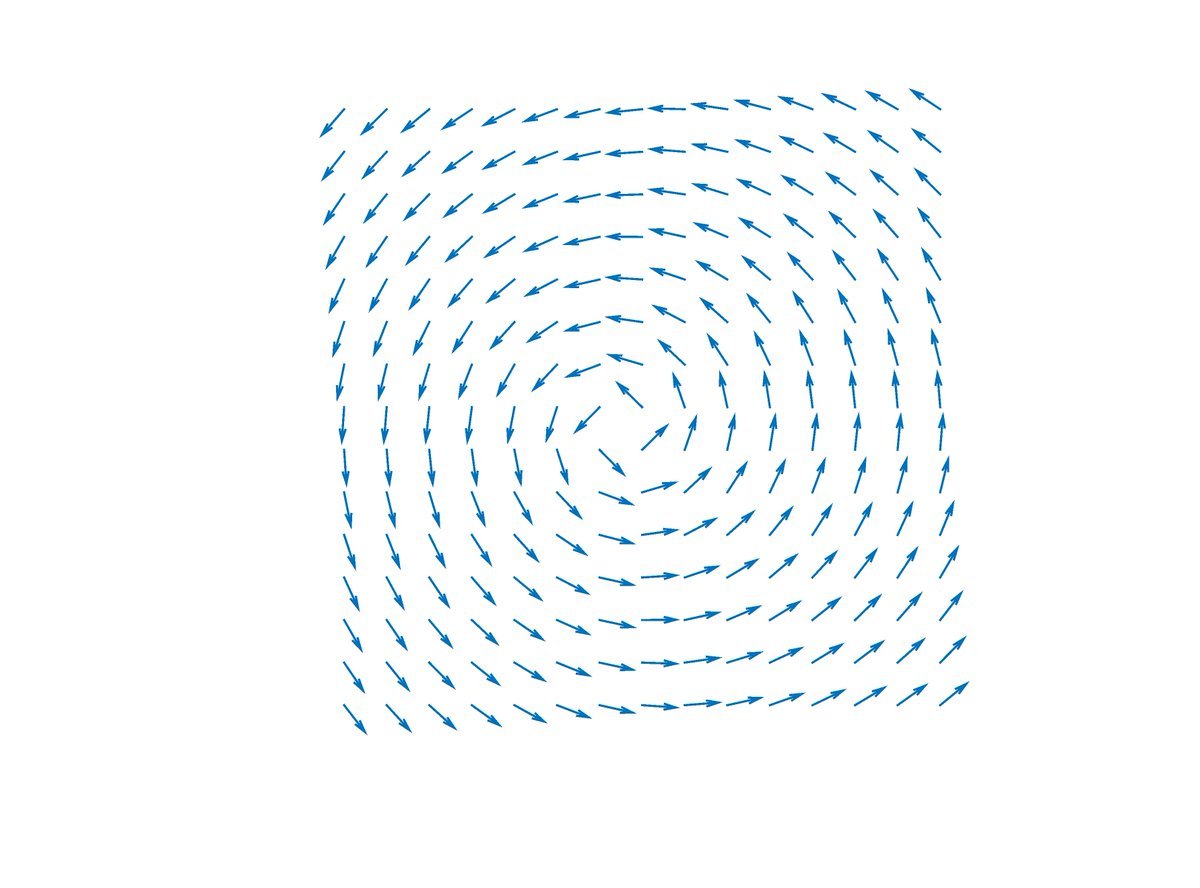1/9 What's the opposite of a counterclockwise vortex? Try it out for yourself -- the answer will probably surprise you!
2/9 How do you construct a vortex? Well, a vortex is a series of rotations. So imagine starting with an array of arrows, all of which are pointing up. Like this:
3/9 Pick a point in the center of the grid and call it the origin. Now rotate the arrows according to the angle their position makes with the horizontal axis. Specifically, if the position vector makes an angle θ with the horizontal, then rotate the arrow counterclockwise by θ.
4/ This rotation process gives you a counterclockwise vortex, as shown below.
But what happens if you rotate the arrows CLOCKWISE by θ, instead of counterclockwise?
This should give you the opposite of a counterclockwise vortex. But what does it look like?
But what happens if you rotate the arrows CLOCKWISE by θ, instead of counterclockwise?
This should give you the opposite of a counterclockwise vortex. But what does it look like?
6/ It looks like this!
This is an "antivortex", and it is not the oppositely-winding vortex that you were probably expecting.
This is an "antivortex", and it is not the oppositely-winding vortex that you were probably expecting.
7/ Vortices and antivortices are opposites in the sense that they can be created by a local distortion of the state with uniformly aligned arrows, and then "annihilated" again.
8/ Of course, you can also make a clockwise vortex. You just have to do the same process as above, but starting with a state that has all down arrows instead of all up arrows.
9/9 There is an antivortex for the CW vortex also -- it looks like the one in tweet 6, but with all the arrows reversed in direction
In technical jargon the "vector field" has four kinds of "quasiparticles" (basic excitations): two vortices (CW and CCW) and two antivortices.
In technical jargon the "vector field" has four kinds of "quasiparticles" (basic excitations): two vortices (CW and CCW) and two antivortices.

 Read on Twitter
Read on Twitter



![5/ [This tweet intentionally left blank, so that you can try it yourself.] 5/ [This tweet intentionally left blank, so that you can try it yourself.]](https://pbs.twimg.com/media/EuOipNOXcAAsuPR.png)



